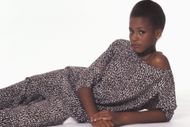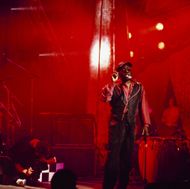Turn to sampling as something greater than a practice, but as a musical medium of time travel, where pieces of the past are refigured to be equal to the sound of tomorrow. And instead of mere borrowing, producers deconstruct the older records and remake them so that they still sound completely different but somehow near.
Whatever it is, the uncopyable hook of an old soul record or a voice on the edge of hearing turned upside out in recognition, these auditory shreds are raw material for new tunes. Out of the gritty origins of hardcore hip hop, through the sheen of textures of pop and the beat of electronic music, sampling enables artists to merge eras, styles, and moods, creating songs that converse across time.
It's both a tip of the hat to the music of the past and a daring leap into the future. Not all hit song pops ready-made from the ether. A lot of the most memorable anthems are owing to something that already existed earlier, a shared melody, a forgotten riff, or a pilfered vocal line unearthed from music history's depths.
Rather than starting from scratch, musicians and producers dig deep, recycling old sounds and updating them with modern élan. This blend of new and old creates something both rooted and revolutionary.
Whether it's a chart-topper hit single dominating the charts today, disrupting the airwaves, or a hit that defines a generation placed on Rolling Stone's '500 Greatest Songs of All Time', sampling has been behind the scenes, powering some of music's most iconic moments.
Let's examine the hidden bedrock under these tracks and expose the borrowed brilliance behind the bangers.
Disclaimer: This article contains the writer's opinion. The reader's discretion is advised!
Here are the top 8 legendary music samples and their surprising origins
These eight unforgettable music samples not only defined classic songs but also hail from places you never knew. From soul gems hidden inside decades-old crates of vinyl to foreign records most listeners don't even know exist, these samples have been reborn into today's hits.
Some were sampled to the point of unrecognizability, while others were left intact and became the foundation for chart-topping and award-winning anthems.
Whether it's a mournful piano loop from a 1970s ballad or a funky groove repurposed with grit and reused for a hip-hop classic, all of these samples demonstrate that musical brilliance can lie in rethinking what already exists.
Let's deconstruct the source material behind these iconic tracks and see how they were rewritten into something unforgettable.
1) The Winstons – Amen Brother
Years before sampling grew into its role as the signature element in contemporary music, a six-second drum break buried deep in the Winstons' 1969 Amen Brother track rested in silence that laid the groundwork for sound experimentation to last decades.
That brief break, now colloquially referred to as the Amen Break, would find itself sampled more than 5,000 times, seeping into genres ranging from hip-hop and jungle to pop to electronic music. Its sharp, syncopated beat became a producer's go-to sample for raw energy and percussive drive.
Although the original was a B-side with humble aspirations, its influence was seismic, appearing in innumerable records, including the legendary Straight Outta Compton by N.W.A., where the sample helped solidify the aggressive, revolutionary vibe of West Coast rap.
Read More: 9 best Bella Hadid Cannes looks of all time
2) Whitney Houston - My Love Is Your Love
When Duke Dumont dropped his chart-topper constructed around Whitney Houston's My Love Is Your Love, it was not merely another club banger; it was a respectful tip of the hat to an enduring legend. Instead of merely pursuing a retro buzz, Dumont (under his pseudonym Adam Dyment) engaged with the sample with intention and a sense of duty.

The song's catchy beat and forceful vocal performance brought him his second No. 1, but in the background, there was a sensitive balancing act between creativity and respect for the original composition. Dumont initially thought about substituting the Whitney sample with a new singer, but he eventually decided to keep her voice, seeing the emotional and cultural significance that it had.
Getting permission to use Houston's vocals wasn't merely a legal formality; it was a significant milestone, particularly because Wyclef Jean, one of the original authors, is reportedly choosy about how his work is reused. That he approved it was a gesture of trust, a recognition that the reinterpretation remained faithful to the essence of the original.
Read More: 8 Ice Cube songs that show why he’s a legend
3) Stevie Nicks – Edge of Seventeen
There is power in a song that continues to endure throughout the eras, and Stevie Nicks' Edge of Seventeen ranks as one of the few existing tracks that just cannot be abandoned in the rearview mirror. Its guitar rhythmic strum has transcended the status of a simple introduction, it's an established standard, used and refurbished to sustain it within its new terrain.
Destiny's Child famously used it in 2001's Bootylicious, merging rock and R&B into a pre-2000s anthem of confidence. Miley Cyrus, years later, borrowed the same sonic grunge for her Midnight Sky single, which also quotes the iconic riff in spirit, if not in fact. Even off the charts, the song's influence continues, such as Joan Cusack's lovingly disorganized homage in School of Rock.
Edge of Seventeen isn't just a classic; it's a source text, continuously sampled, reworked, and reinvented by artists who value its enduringness.
Read More: 10 famous songs you didn’t know were originally written for someone else
4) Curtis Mayfield – Move On Up
Curtis Mayfield's Move On Up is propelled by an energy that won't be kept down, provoked by its optimistic horn section that literally bursts from the speakers with hope.
Though it's been a soul standard in and of itself for decades, ringing out in pop culture phenomena such as Bend It Like Beckham, the song was revived when Kanye West sampled the legendary brass riff on his 2005 number-one hit Touch the Sky.

Rather than simply swiping nostalgia, West reinterpreted Mayfield's victorious sound into something brassy and ambition-driven, true to his own lyrical ascent to stardom. In the process, he spanned generations of black excellence in music and blended 1970s soul with 2000s grit and reminded all of us that the secret ingredient of grit is eternal.
Read More: 10 famous rap beefs that shook the hip-hop world
5) Snap! - Rhythm is a Dancer
Bastille's 2013 song Of The Night is a masterful blend of two club hits from the '90s, taking aspects of Snap! 's Rhythm is a Dancer and Corona's The Rhythm of the Night. Although both of these original tunes were huge club hits in their own right, Bastille did something bold by remixing the songs into darker, more ambient, but still unmistakably catchy versions.
Rhythm is a Dancer, specifically, has a special place in dance music history, not just for its distinctive beat but for being the UK's best-selling single of 1992, with over half a million copies sold.
Bastille's ingenious sampling of such a legendary song, combined with the melodic sensibilities of The Rhythm of the Night, gave the '90s clubbing scene a new lease of life, making their reinterpretation both nostalgic and new at the same time.
The success of Of The Night vindicated the potential of the remixes that respect the past and challenge the parameters of current pop.
Read More: 8 Tate McRae songs you need on repeat
6) Dido - Thank You
Eminem's iconic hit single Stan, released in 2000 as the third single for The Marshall Mathers LP. The song, whose story is told eerily about an overzealous fan, became an international hit on its release date, topping the charts in 11 nations.

The hub of Stan is a sampling of Dido's 1999 single Thank You, a song on her debut album. Eminem sampled Dido's soaring voice, upon which the song starts, and the confusion that arose from it all led to her voice finding its way to an even bigger audience.
Discussing the song's impact, Dido openly talked about in a 2013 HuffPost interview that although it didn't consciously shape her music, it radically changed the course of her career.
Read More: The evolution of BTS: Beyond the music, beyond the scene
7) Abba - Gimme! Gimme! Gimme!
When pop royalty demands your permission, even legends get a second thought. In 2005, Madonna, long an icon and owner of the best-selling album by a woman artist in the record books, fixed her sights on a piece of Abba magic. She had her eyes set on sampling their 1979 hit Gimme! Gimme! Gimme! (A Man After Midnight) for what turned out to be her international blockbuster, Hung Up.

But the blessing of Abba wasn't easy to come by. Famed for closely protecting their catalog, Benny Andersson and Björn Ulvaeus had only infrequently granted sampling permission. The Fugees' application of The Name of the Game in Rumble in the Jungle a notable exception.
Madonna was not granted a quick pass. Rather, she wrote an emotional letter through a representative to the band's home country of Sweden, paying tribute and saying the song was a tribute. Benny and Björn demurred, fearful of watering down their legacy, but eventually came around, citing admiration for Madonna's lasting artistry and courage.
The outcome? A blend of retro disco and contemporary pop that brought Abba's music to a new generation, demonstrating that sometimes even pop deities can say yes, if the tribute is loud enough.
Read More: Top 10 'The Beatles' songs that still echo through time
8) Kendrick Lamar – Money Trees
Few artists weave samples into their narratives as seamlessly as Kendrick Lamar, and Money Trees is one of his finest hypnotic victories on that front. Instead of using old-school soul or funk as a reference, Kendrick and producer DJ Dahi did the unexpected detour into indie rock, retooling a clip of Beach House's 2010 dream-pop hit Silver Soul.

Dahi takes a gooey vocal sample from the intro and warps it a bit, then stretches it into a hallucinatory, looping bed that has the sense of floating underwater. This dreamy quality not only outfits the beat, it becomes the affective undertow of the song, allowing Kendrick to float over recollections of youthful hustles.
The genius is in how such an insubstantial sample can redefine the mood of a song, making Money Trees into a daydream colored by want and fantasy.
Read More: 8 Post Malone songs that defined a generation
In short, music sampling is so much more than a means of nostalgia or tribute, it's an act of reinterpretation. A sample, creatively applied, can change the atmosphere, introduce unforeseen depth, or entirely transform the meaning of a track.
Whether it's a chopped-up vocal, an old guitar lick, or a passing synth note, the proper sample becomes less background and more narrative. It's this blend of then and now that enables artists to create something completely new while quietly tipping their hat to what has already been done.
Keep reading SoapCentral for more informative content!
Also Read: Top 10 Doja Cat songs you can’t stop vibing to
